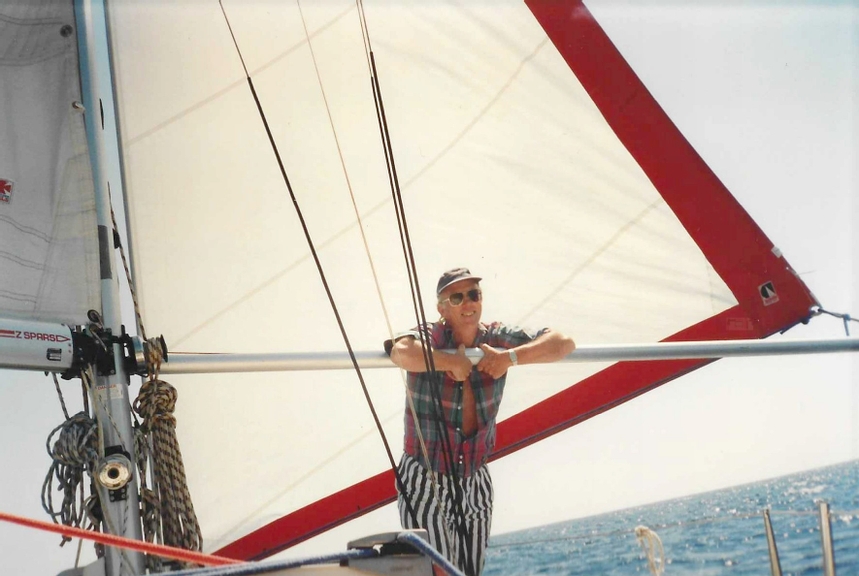Vale John Lusk 1940-2022
An abiding family memory of John Lusk is of bashing to windward in boisterous seas on one of their annual sailing holidays to the Bay of Islands. Down below aboard their yacht, Belle Amie, the crew embraced buckets and hoped death would soon relieve them of acute seasickness, while out in the cockpit sat John, a picture of serene good health, taking the sea air and poring over legal documents.
The image neatly encapsulates many of the qualities which defined John: his unfailing calm in troubled waters, his enduring love of the sea and total dedication to his legal career.
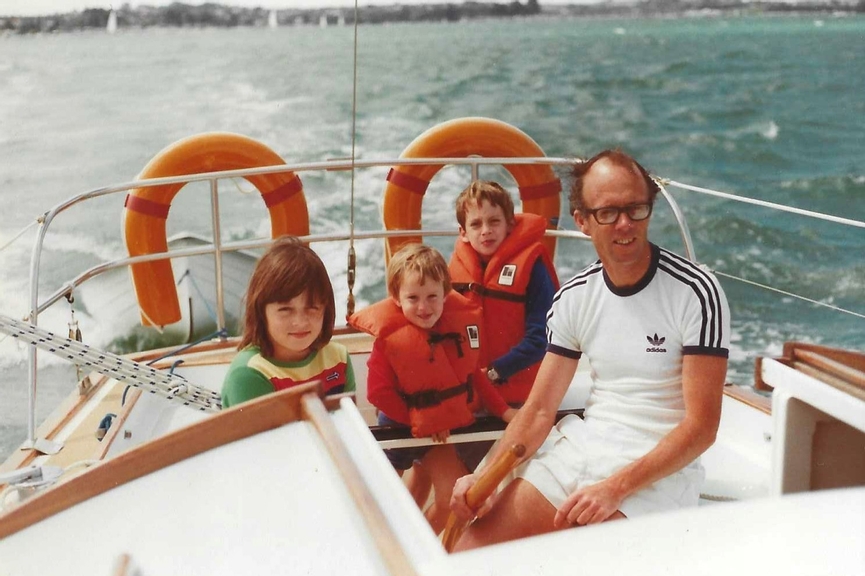
“There were two things I wanted to inherit from my father,” says his son, Hamish. “They were his cast-iron stomach and his ability to read and absorb complex documents. Sadly, I inherited neither of them.”
John Lusk, who passed away on May 19, earned deep respect both in the legal community, where he was recognised as one of New Zealand’s top commercial lawyers, and the New Zealand sailing community, where he wielded a quiet but powerful influence over many high profile campaigns.
He was a significant guiding force in the careers of Sir Peter Blake and Grant Dalton, both in their round-the-world endeavours and their subsequent America’s Cup campaigns. He also served on various trusts and boards supporting yachting across a broad front.
“John was a big influence in my life, both in a personal and professional sense,” says Emirates Team New Zealand CEO Dalton. “The same would apply to ETNZ COO Kevin Shoebridge and many others in the sailing community.”'
Dalton and John Lusk’s relationship was cemented when Dalton was putting together his successful New Zealand Endeavour campaign for the 1993-94 Whitbread Round the World Race. “Every Sunday afternoon for more than two years, I would go to John’s home, knock on the door, kick off my shoes and sit down at the dining room table. Out would come John’s red pen and we would go to work.
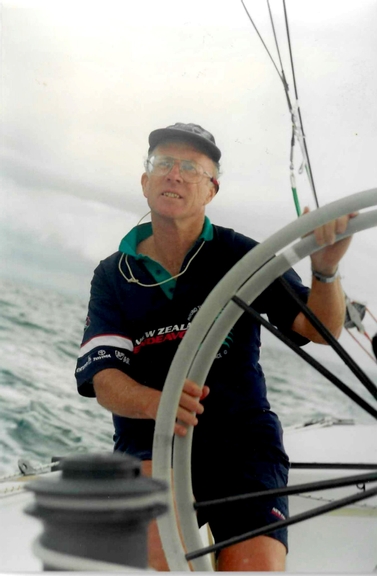
“It took months and months and months sitting at his dining table working on dozens and dozens of contracts, frequently into the night. Long-suffering Jo would bring us coffee. Hamish and his sister, Henrietta, were there as well.
“John steered me very carefully in those testosterone-filled days, when I was inclined to pick a fight with just about anybody. The fact that I avoided getting into any major scraps was probably because of his mentorship.
“He steered very quietly, no jumping up and down, always measured and solid.”
That relationship only strengthened through Dalton’s continuing round-the-world campaigns – Merit Cup, the record-setting 62-day circumnavigation with the Club Med catamaran, Amer Sports One and Camper – and on into his Emirates Team New Zealand America’s Cup campaigns in 2007 and 2013.
“He was everywhere,” says Dalton. “I often wondered how he got any chargeable work done, because he was doing so much un-billed work for yachting. He and his wife, Jo, loved the team environment. John was not the big lawyer from Russell McVeagh. He was ‘Tusky’, part of the team.”

Sailing was a passion for John from an early age. He was born in Tauranga and, like most Kiwi sailors, started out in a P-Class dinghy. His was built by Jimmy Gilpin, who was a class legend, the only person to have won the premier Tanner and Tauranga Cup events three times. John named his P-Class Jimmy G.
“Jimmy G was uppermost in Dad’s mind right to the end,” says Hamish Lusk. “In his final weeks, Dad spoke frequently about the Jimmy G and his somewhat discombobulated memories of his early sailing days.”
“He was taught to sail by one of his Tauranga Primary School teachers, who was very fond of John,” adds Jo. Zeddies also played a part in his dinghy-racing days.
For his secondary schooling, John attended Kings College in Auckland, with the aid of a scholarship from his father’s law firm. “One day, when he was just 13-years-old, he was called to the headmaster’s office,” says Jo. “The headmaster told him, ‘Lusk, your father has died’.”
A friend had fallen into the Wairoa River near the McLaren Falls while fishing. John’s father, Keith, dived in to save him, but hit his head on a rock and drowned. Following this tragedy, John’s mother, Elaine, and his two siblings, Jan and Tony, moved to Auckland and settled in Takapuna.
At Kings, John excelled as a runner and then moved on to study law at Auckland University. Law ran strongly through the family genes. His father and mother were both lawyers, as was his grandfather. His brother, Tony, is a QC.
Before he had even graduated from law school, John was tapped as a partner in the McKenzie and Bartleet firm, which later became the Russell McVeagh powerhouse. “In John’s prime, there wasn’t much that happened in the commercial life of the city that John wasn’t involved in,” recalls Andrew Harmos.
Harmos and Greg Horton were younger lawyers, who worked with John at Russell McVeagh before establishing their own firm in 2002. John joined them in what became Harmos Horton Lusk.
Harmos spoke of John’s encyclopaedic knowledge of the law, his high ethical standards, a quick and dry sense of humour, mischief and fun. “Never would John raise his voice or lose his cool.”
Like Dalton, Harmos also mentioned John’s trademark red pen and noted: “It was rare for a document prepared by a colleague to survive without improvements at the hand of John’s red pen.”
Throughout his professional career, sailing remained an important part of John’s life. At McKenzie and Bartleet, John McKenzie was a keen yachtsman and became commodore of the Royal New Zealand Yacht Squadron.
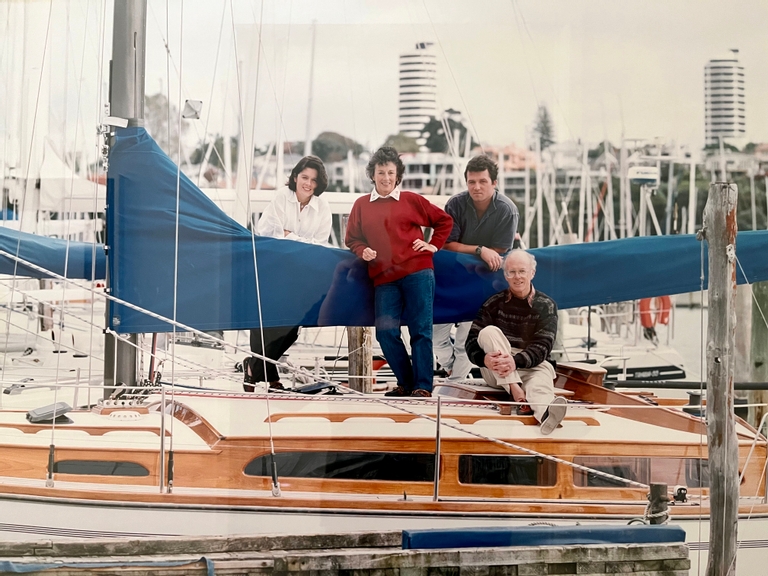
McKenzie owned Sirius, a Spencer-designed 45-footer, and John Lusk raced regularly on board, including competing in the 1968 Sydney-Hobart Race. He also completed the passage back across the Tasman from Hobart to Auckland.
In his later involvements with Blake and Dalton, John did several major offshore passages and races, including Sydney-Hobarts with Steinlager 2 and NZ Endeavour as well as the Fastnet classic with Steinlager 2.
He also owned or co-owned several boats. Tony Frankham was a close friend and professional colleague for 60 years and shared two Townson yachts with John, first a 34-footer named Splinter and then the beautiful 38-footer, Belle Amie. “In 19 years of boating partnership, we did not have a single argument, or cross word,” says Tony, who spoke of John as a loyal, considerate and absolutely dependable friend, a “no-fuss guy and never a self-promoter or seeker of limelight”, a man of “true humility”.
For John, Jo, Hamish and Henrietta, those yachts were the centrepiece of annual family cruises to the Bay of Islands every summer. “Every Christmas, no matter what age we were, there was no question, we were all on the boat up the coast,” Hamish remembers. “Sailing was a wonderful family focus. Many summer days at Orokawa Bay.”
Hamish may not have inherited his father’s cast-iron stomach, but he did inherit a love of the sea. He worked as a sailmaker during the 1992 New Zealand Challenge for the America’s Cup in San Diego and currently owns Fortuitous, the 45ft launch John bought in 1997. Belle Amie, the Townson 38 John shared with Tony Frankham for 12 years, now belongs to Dan Bernasconi, ETNZ’s chief designer.
John’s athletic prowess, first revealed at Kings College, also became a lifelong passion. Every Saturday, he and a group of friends would gather at the Tamaki Yacht Club and go off to run various routes. Among the regulars were Whitbread and America’s Cup veterans Dalton and Tony Rae, along with Kim McDell.
McDell was at Kings with John, although four years his junior. McDell went on to be a sailing world champion and was for a period the fastest junior miler in the world.
“John was committed to those Saturday runs,” McDell recalls. “It was just a fitness thing, not a race, but there were some pretty competitive characters in the group. Dalton was usually out front and had to be first in,” he laughs.
Dalton also joined John frequently for weekday runs before work. “In those days, you could run and chat at the same time,” says Dalton. “We actually got a lot of work done as we ran.”
Jo Lusk recalls an earlier occasion when John joined Peter Blake’s Steinlager 2 for a passage from Wellington to Christchurch. During a stopover, some of the crew decided to go for a run, so John offered to join them.
“The Steinlager boys all started taking the Mickey out of him,” Jo recalls, “until Blakey warned them to be careful, to watch out for Tusky. Sure enough, John came home first, beating all those fit young guys.”
Blake and John first crossed paths tangentially during the Lion New Zealand Whitbread campaign, when John did the legal work for designer Ron Holland, who, like Dalton in later years, spent many hours at the Lusk dining room table.
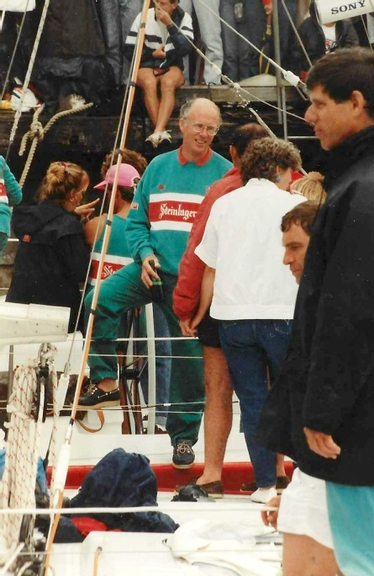
For Blake’s next campaign, which involved the trimaran Steinlager 1 for the Round Australia race, followed by Steinlager 2 for the 1989-90 Whitbread Round the World Race, John was fully involved as chairman of Trustees with Russell McVeagh partner Richard Green and New Zealand Breweries executive Mike Smith.
John had earlier been drawn into this type of service at the behest of New Zealand Breweries chief Douglas Myers at the formation of the New Zealand International Yachting Trust, which later became the NZ Sailing Foundation.
The founding Trustees were Sir Tom Clark, Don St Clair Brown, Peter Blake, Peter Montgomery, Ralph Roberts, Trevor Geldard, John Street, and John Lusk, who acted as secretary and later became chairman.
“John was very reserved,” says Street. “He was old school, he never talked about himself and never sought the limelight.” Broadcaster P.J. Montgomery adds: “During his long tenure as Trustee, Secretary and Chairman, the Trust had the benefit of John’s impressive legal experience and wise counsel as well as his attention to detail.”
After Steinlager 2’s overwhelming victory in the Whitbread Race – the first boat to win every leg of the gruelling marathon – Blake was reluctantly coaxed into the America’s Cup arena, again by Doug Myers, who was concerned at the direction the 1992 Challenge was taking in San Diego.
This was the last of the three Fay Richwhite challenges. Russell McVeagh was involved in all three with Richard Green, Andrew Johns and Greg Horton as Trustees. Andrew Johns played a lead role in the audacious 1988 Big Boat Challenge, which led to protracted court battles in the USA.
Michael Fay and David Richwhite bowed out after 1992. When Blake and Alan Sefton decided to mount a fresh challenge under the Team New Zealand banner in 1995, they turned to John Lusk and Richard Green to be Trustees, along with Sir Tom Clark, Jim Hoare and Roger France.
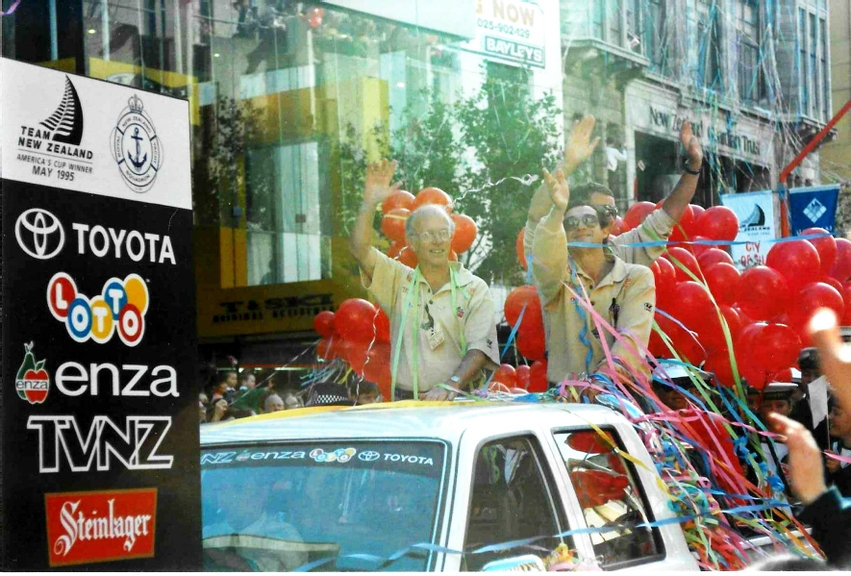
“We decided to set up our sponsorship model through a charitable trust,” says Sefton. “John’s primary expertise, apart from wise counsel, was contract law. He was one of New Zealand’s best commercial lawyers, so he brought a lot to the table in that respect.
“We were breaking new ground in the way sport sponsorships were put together. John did all the legal work, which stood the test of time. Grant Dalton continues to use that model to this day.”
The Blake Trust was dissolved after the 2000 campaign and considerable assets were disbursed to the Spirit of Adventure Trust, Auckland Coastguard, Yachting New Zealand, which used its share to launch the Have a Go programme to encourage newcomers into the sport of sailing, and to what is now the Sir Peter Blake Marine Education and Recreation Centre.
Recalling his long association with John both through Russell McVeagh and their various yachting endeavours, Richard Green said it had been a privilege and a pleasure. Like everybody, Green experienced the ministration’s of John’s “ubiquitous red pen” and was confident that in drafting his admission documents to St Peter at the Pearly Gates, “the syntax, grammar and spelling would have been impeccable”.
Following the 2003 defeat in Auckland, Dalton was called in to rebuild the team and, with the victorious challenge of 2017 in Bermuda and the successful 2021 Auckland defence in the bag, continues to lead the team towards its next defence in Barcelona in 2024.
While John Lusk’s direct involvement reduced after 2013, his partner Greg Horton continues to carry the torch as a Trustee. Lusk’s legacy, however, is deeply embedded in the team. “To be honest, I don’t know if Team New Zealand would have existed if he had not been there in the first place,” said Dalton.
